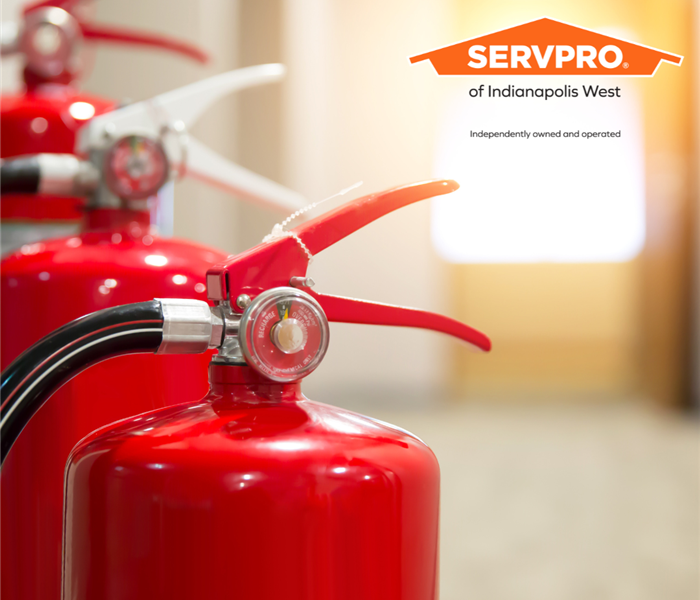How to Effectively Use a Fire Extinguisher
9/10/2023 (Permalink)
Having easy access to a fire extinguisher in your home or workplace is a vital safety measure. However, it's equally important to know how to use one and understand which types of fires they are effective against.
A fire extinguisher can play a crucial role in preventing the spread of fire and smoke damage within your City and Indianapolis West residence or office. In the unfortunate event of a fire, remember that SERVPRO of Indianapolis West is here with compassionate experts to assist you in the cleanup process.
The Occupational Safety and Health Administration (OSHA) offers valuable training tips (see below). If you ever have doubts or concerns, always prioritize your safety by leaving the premises and dialing 911 once you are safely outside.
SERVPRO of Indianapolis West wants to ensure you are aware that you can attempt to combat a small fire only under the following conditions:
- You have the right class of fire extinguisher.
- You know how to use the fire extinguisher.
- You can access the fire extinguisher quickly. Remember, fire spreads rapidly, and fire damage and smoke damage are far less concerning than injuries to yourself or others.
Types of Portable Fire Extinguishers:
- Class A Fire Extinguishers: Suitable for fires involving cardboard, paper, wood, and dried vegetation.
- Class B Fire Extinguishers: Effective against fires fueled by flammable and combustible liquids such as gasoline, diesel, oil, oil-based paints, and various solvents.
- Class C Fire Extinguishers: Designed for fires involving appliances, tools, or equipment that is electrically energized, as well as fires in close proximity to electrically-energized equipment.
- Class D Fire Extinguishers: Intended for extinguishing fires caused by combustible metals like magnesium or sodium (not ordinary carbon steel).
- Class K Fire Extinguishers: Specifically designed for kitchen fires involving cooking oils and greases, including vegetable and animal-based oils and fats.
Remember, fire safety is a shared responsibility, and knowing how to use a fire extinguisher properly is an essential skill for everyone's safety.





 24/7 Emergency Service
24/7 Emergency Service
